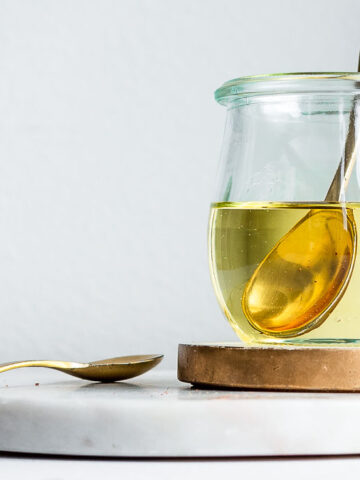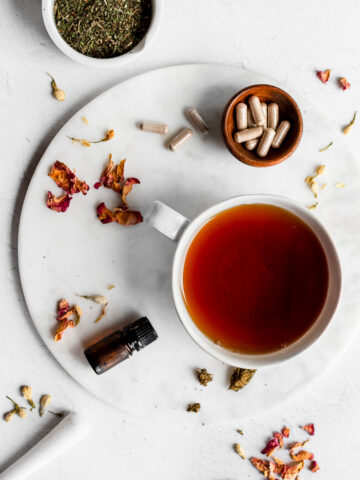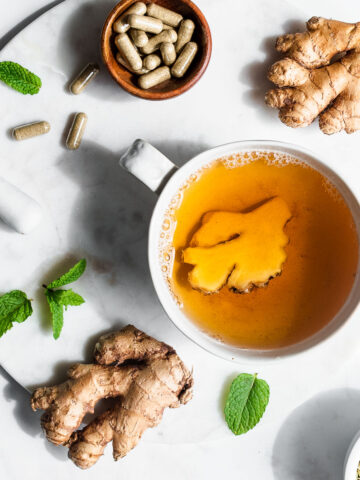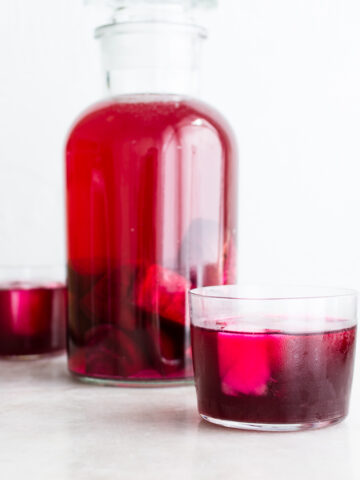You may have heard that soaking grains helps increase mineral absorption and enhance digestibility. Here's what's really going on.
Jump to Benefits | Drawbacks | Bottom Line | How to Soak Grains
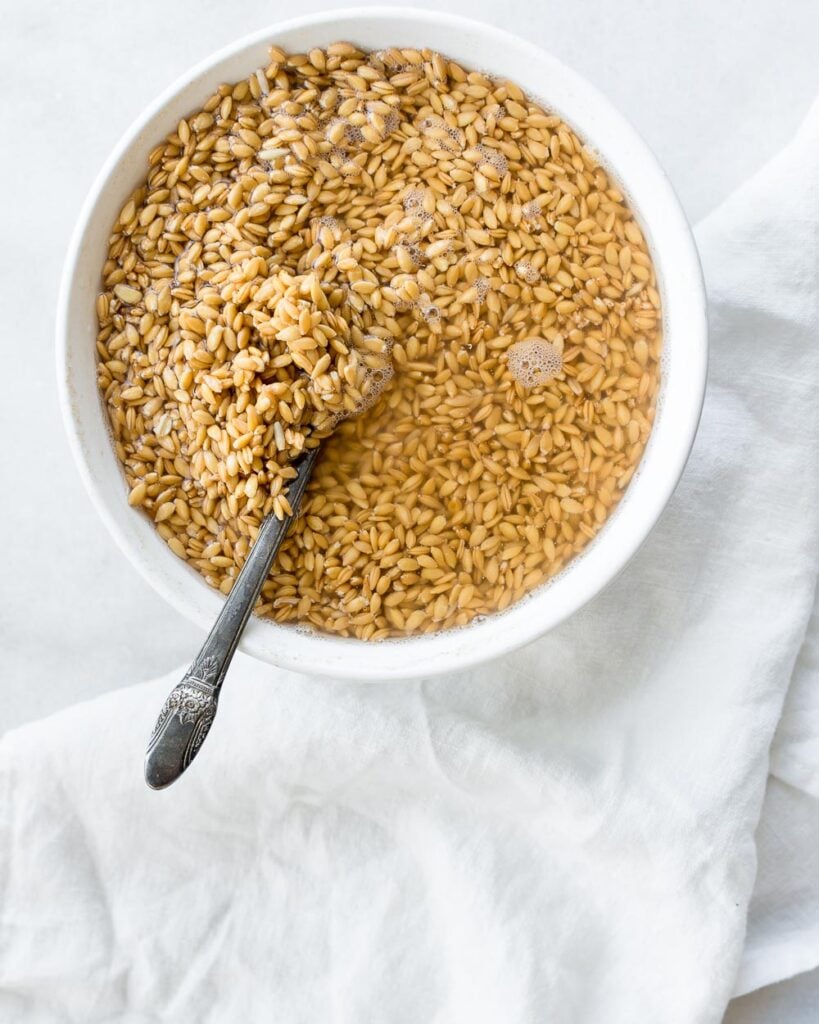
Whole grains are wholesome and nutritious foods for most people. People who eat whole grains tend to live longer, too (1). And some of the longest-lived peoples in the world consume diets rich in whole grains (2, 3).
But most of those long-lived people aren't just eating bran flakes and pre-sliced whole grain sandwich bread; rather, they're eating minimally processed whole grains prepared in ways that maximize their nutritional value.
In many culinary traditions throughout the world, grains are carefully prepared by soaking, fermentation, or sourdough leavening. And while many cultures do traditionally soak or ferment their grains, the practice is not necessarily universal.
What are the benefits of soaking grains?
Grains are a good source of complex carbohydrates and dietary fiber. They also contain B vitamins such as niacin and B6. They also contain minerals like calcium, iron, phosphorus, potassium, and zinc.
But here's the catch: Compounds that occur naturally in grains can make them difficult to digest and make their minerals difficult to absorb. And for some people, especially those with compromised digestion, those complex carbohydrates can send them into fits of pain, bloating, and digestive distress. Soaking whole grains helps to reduce these compounds, resulting in increased mineral availability and much easier digestion.
Soaking grains also release compounds called lower-order inositols - specifically myo- and d-chiro-inositol. And these compounds help support blood sugar regulation and metabolic as well as hormonal health.
Enhanced Mineral Absorption
When you soak whole grains in warm water overnight, you activate the enzyme phytase. This enzyme then works to break down phytic acid, which binds minerals like iron, calcium, and zinc. As phytase does its magic, it releases minerals in whole grains and makes them easier for your body to absorb (4).
Soaking is also the first step in sprouting grains. Sprouting grains tends to release even more minerals than soaking alone (5).
Most people who eat an otherwise nutritious diet inclusive of meat, fish, and vegetables will consume the minerals their bodies need; however, if you're concerned about your mineral intake, soaking or sprouting your grains can be a good strategy.
Enhanced Digestion
In addition to activating the enzyme phytase, soaking your grains also activates the enzyme amylase, which breaks down complex starches found in grains. These complex starches can make grains difficult for some people to digest.
When those starches are broken down by soaking, sprouting, or sour leavening followed by cooking, the grains tend to be a little easier on your digestion. This is also why sourdough bread tends to be easier to digest than quick-rise whole wheat bread and why it's permitted on a low-FODMAPs diet (6), particularly when it's made from ancient grains like spelt.
Increase in Micronutrients that Support Blood Sugar Regulation and Hormonal Balance
When enzymes break down phytic acid, the compound that makes the minerals in grains difficult to absorb, they not only enhance the availability of minerals, but they also convert phytic acid into lower-order inositols - and myo-inositol specifically.
These micronutrients help to support blood sugar balance, metabolic and hormonal health. These lower-order inositols have a particularly dramatic effect on the hormonal health and fertility of women with polycystic ovarian syndrome (PCOS) (7, 8, 9) and are often used therapeutically as supplements to support fertility, hormonal health, and blood sugar regulation.
Myo-inositol supports blood sugar regulation and can be helpful in the management of type 2 diabetes (10). Animal studies have found that these inositols which are present in soaked and sprouted grains may help to return insulin sensitivity to those who are insulin resistant (11), so they're particularly powerful micronutrients.
What are the drawbacks of soaking grains?
Soaking grains improves mineral availability, makes grains easier to digest, and increases compounds that help support metabolic health. There are a few drawbacks. Namely, soaking grains can be tedious and is generally less effective than sprouting or sourdough fermentation.
While soaking grains, especially for porridge and gruel, is a traditional culinary practice throughout the world, not all traditional peoples soaked their grains. The practice isn't mentioned in Nutrition and Physical Degeneration, a landmark book that evaluates the traditional diets of pre-industrial people throughout the world.
Soaking grains can be tedious.
Planning ahead and soaking grains in advance is easy and takes very little time; however, it can feel tedious until it the practice becomes routine. If you want the benefits of soaking but have trouble remembering or advanced planning, you can purchase sprouted grains and sprouted flour at many natural foods markets as well as online, and sourdough bread is readily available in most areas.
You're probably getting enough minerals already.
If you're eating an otherwise nutrient-dense diet that's rich in minerals from meat, fish, and vegetables, you probably don't need to worry about soaking your grains.
The mineral-binding effects of food phytate can contribute to mineral deficiencies, but this is generally only a concern in developing nations where people may rely only on grains and pulses with very little access to other mineral-rich whole foods.
It might also be a concern for people who adhere to vegan and vegetarian diets and who must rely heavily on grains and pulses due to the absence of meat, fish, eggs, and milk.
If you eat plenty of mineral-rich foods, soaking grains likely won't contribute a significant amount of additional minerals to your diet. Of course, you might still benefit from eating soaked or sprouted grains because they're also easier to digest.
Some people benefit from mineral-binding effects of phytate.
Some people, particularly those of Irish descent, are genetically predisposed to iron overload, and a condition called hemochromatosis. While avoiding iron-rich foods like organ meats or clams is a primary strategy, the iron-binding effects of whole grains prepared without any special treatment could be valuable.
Phytic acid is a powerful antioxidant.
While we often call phytic acid an anti-nutrient because it binds minerals, it is also a powerful antioxidant precisely because it does bind minerals. More specifically, it binds iron.
Your body needs iron and iron performs many vital functions within your body. But, it can also contribute to free radical formation when the way your body regulates iron is disrupted (12).
Because phytic acid found in whole grains binds to iron and prevents you from fully absorbing the iron in grains, it can act as an antioxidant (13), and researchers are examining the therapeutic role it might play in colon and other cancers (14).
Not only does phytic acid bind minerals, but it also binds heavy metals in the gut (15), thus potentially helping to minimize their accumulation in the body.
Should you soak grains or not?
There are both benefits and drawbacks to soaking grains. And it can be difficult to decide if it's a technique that's worth your time.
Remember that in an otherwise nutrient-dense, omnivorous diet, the mineral-binding capacity of phytic acid is unlikely to contribute to mineral deficiency. If you find that you have trouble digesting whole grains, you might try soaked or sprouted grains or sour-leavened bread to see if you feel better when you eat them.
If you're prone to iron overload or exposed to heavy metals, you might consider eating whole grains for their phytic acid content and doing so without any advanced or special treatment like soaking or sprouting.
If you enjoy the process of soaking or sprouting grains, then you should continue doing just that.
How do you soak grains?
To soak your grains, you should place them in a mixing bowl, cover them with hot water and let them rest at least eight and up to 48 hours. Most recipes call for soaking overnight.
You can also add an acidic ingredient, like lemon juice, vinegar, or sourdough starter, to the soak water to facilitate the release of phytase and the breakdown of phytic acid. While the use of whey from yogurt or kefir was popularized by Nourishing Traditions, dairy will not facilitate the release of minerals in the same way as a non-dairy acidic ingredient will and so is counterproductive and ineffective.
Grains that are naturally low in phytase, like brown rice or oats, may benefit from sprouting or from the addition of a phytase-rich ingredient like ground rye.
Grinding or cracking grains before soaking them will also help to facilitate the breakdown of phytic acid.
How to Soak Grains
- Soaking Whole, Cracked, or Rolled Grains: To soak grains in their whole, cracked, or rolled form, you'll need to place them in a bowl and cover them with hot water at approximately 140 F. If you like, stir in one tablespoon of acid like vinegar, lemon juice, or sourdough starter per 1 cup of grains.
- Soaking Flour. Baking with soaked flour can be tricky. It's best to use a sourdough recipe or to use sprouted grains because they don't need to be soaked. You can also mix the liquid ingredients of your recipe together with your flour, cover them well, and leave the batter at room temperature overnight, as in this recipe for Milk and Honey Sandwich Bread.
Soaked Grain Recipes
If you're looking for soaked grain recipes, check out the cookbook The Nourished Kitchen, which includes more information about soaking grains. Or check out the recipes below:
Soaked Oatmeal Porridge is super simple to make and cooks up in about five minutes in the morning.
References
- Ma, Xiao et al. “Association between whole grain intake and all-cause mortality: a meta-analysis of cohort studies.” Oncotarget vol. 7,38 (2016)
- Buettner, Dan. The Blue Zones. National Geographic (2012)
- Beare, Sally. 50 Secrets of the World's Longest Living Peoples. DeCapo Lifelong Books (2005)
- Gupta, Raj Kishor et al. “Reduction of phytic acid and enhancement of bioavailable micronutrients in food grains.” Journal of food science and technology vol. 52,2 (2015): 676-84
- Azeke, Marshall Arebojie et al. “Effect of germination on the phytase activity, phytate and total phosphorus contents of rice (Oryza sativa), maize (Zea mays), millet (Panicum miliaceum), sorghum (Sorghum bicolor) and wheat (Triticum aestivum).” Journal of food science and technology vol. 48,6 (2011)
- Sourdough Processing & FODMAPS. Monash University (2022)
- Genazzani, Alessandro D et al. “Myo-inositol administration positively affects hyperinsulinemia and hormonal parameters in overweight patients with polycystic ovary syndrome.” Gynecological endocrinology : the official journal of the International Society of Gynecological Endocrinology vol. 24,3 (2008)
- Akbari Sene, Azadeh et al. “The myo-inositol effect on the oocyte quality and fertilization rate among women with polycystic ovary syndrome undergoing assisted reproductive technology cycles: a randomized clinical trial.” Archives of gynecology and obstetrics vol. 299,6 (2019): 1701-1707.
- Akbari Sene, Azadeh et al. “The myo-inositol effect on the oocyte quality and fertilization rate among women with polycystic ovary syndrome undergoing assisted reproductive technology cycles: a randomized clinical trial.” Archives of gynecology and obstetrics vol. 299,6 (2019): 1701-1707.
- Pintaudi, Basilio et al. “The Effectiveness of Myo-Inositol and D-Chiro Inositol Treatment in Type 2 Diabetes.” International journal of endocrinology vol. 2016 (2016)
- Larner, Joseph. “D-chiro-inositol--its functional role in insulin action and its deficit in insulin resistance.” International journal of experimental diabetes research vol. 3,1 (2002): 47-60.
- Manz, David H et al. “Iron and cancer: recent insights.” Annals of the New York Academy of Sciences vol. 1368,1 (2016): 149-61.
- Graf, E, and J W Eaton. “Antioxidant functions of phytic acid.” Free radical biology & medicine vol. 8,1 (1990): 61-9.
- Graf, E, and J W Eaton. “Suppression of colonic cancer by dietary phytic acid.” Nutrition and cancer vol. 19,1 (1993): 11-9.
- Daley, Tasha et al. “Effects of phytic acid and exercise on some serum analytes in rats orally exposed to diets supplemented with cadmium.” Biological trace element research vol. 151,3 (2013): 400-5.

